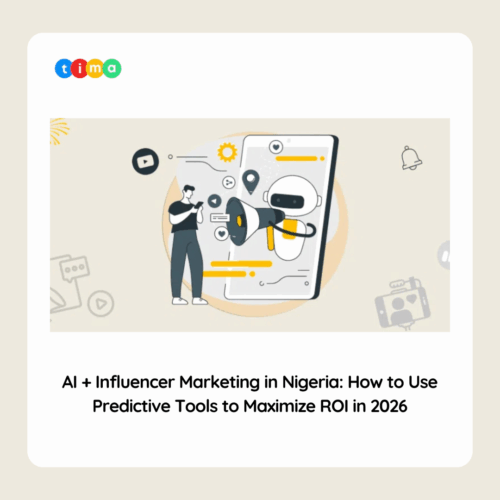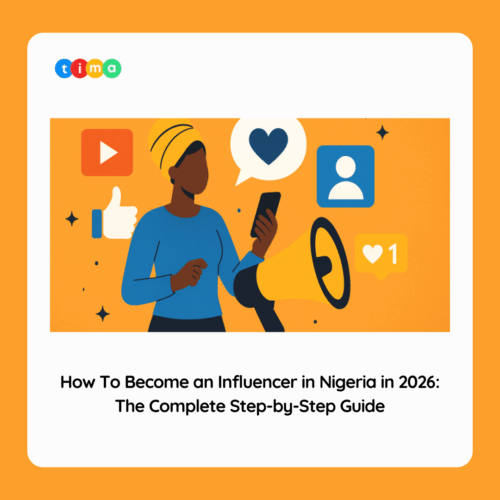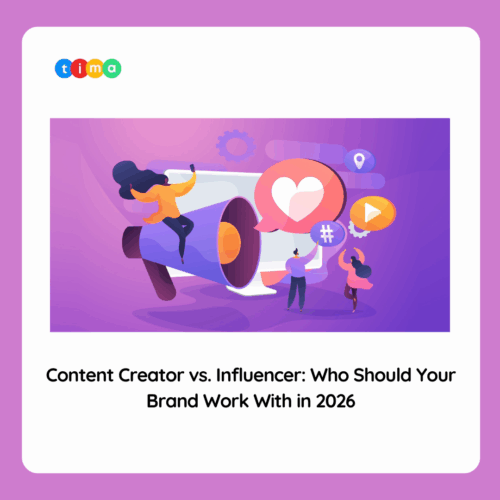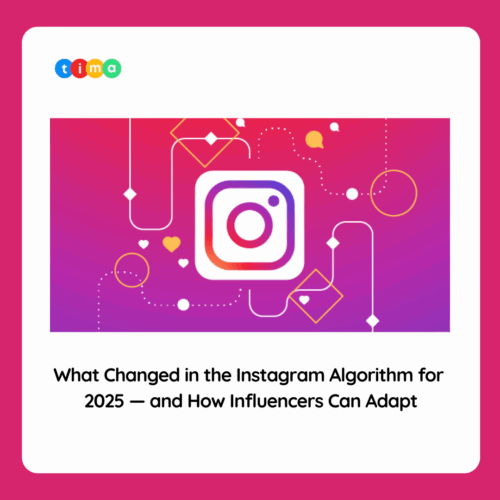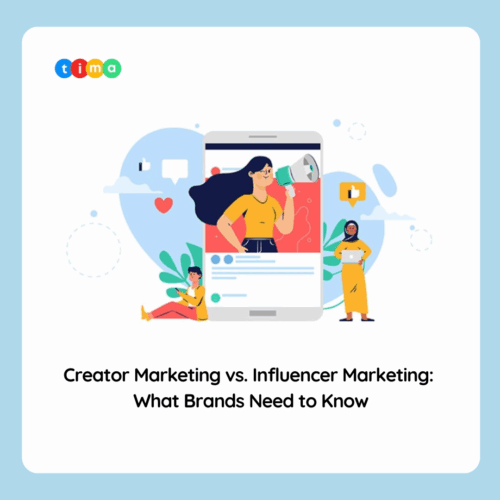Marketing has always been about timing. But in 2026, timing won’t just be a campaign planning detail — it will be the competitive edge. Audiences don’t consume content linearly anymore; they scroll in seasons, binge in cultural cycles, and spend around trigger moments.
That’s where influencer marketing comes in. Unlike traditional ads, influencer collaborations live inside the rhythms of culture. They’re agile enough to ride the wave of a trending moment and authentic enough to embed brand messages in real human experiences.
At TIMA, we’ve been tracking this shift closely — and we see 10 key seasonal inflection points in 2026 where influencer marketing won’t just be nice-to-have, it will be mission critical.
1. The Product Launch Season: Turning First Impressions into Momentum
In 2026, product launches will be less about one-day PR bursts and more about orchestrated creator ecosystems. The “season” of a launch now stretches weeks before and after the official release, with influencers warming up the audience, seeding curiosity, and sustaining hype after the first drop.
Why it matters: Consumers no longer trust faceless ads to validate a new product. They look to micro and mid-tier creators to test, review, and contextualize. A brand that skips influencers here risks losing relevance before the product even has a chance to breathe.
2. Black Friday & Cyber Week: Competing in the Noise Economy
Black Friday 2026 will be more chaotic than ever — with discounts everywhere and consumer attention fragmented. Influencers give brands a shortcut to visibility because they cut through the clutter with trusted recommendations.
What’s new: In 2026, TikTok Shop and Instagram’s in-app commerce integrations will dominate seasonal shopping. That means influencer-driven affiliate content won’t just drive awareness — it will directly drive sales. For brands, this season is no longer about if they should activate influencers, but how early they should secure them before competitors flood their feeds.
3. Summer Sales & Seasonal Refreshes: Lifestyle Meets Commerce
Summer is not just a climate season; it’s a content season. People shop for travel gear, beauty refreshes, outdoor essentials, and even mid-year electronics. Influencers thrive here because their content naturally aligns with lifestyle aspirations.
Think poolside fashion hauls, travel vlogs powered by new gadgets, or skincare routines optimized for the sun. In 2026, audiences will expect to discover their summer buys through people they trust, not banner ads they skip.
4. Back-to-School & Back-to-Routine: The Micro-Moment Goldmine
August and September 2026 will be defined by “returning” — kids to schools, adults to routines, even digital detoxers back to structured consumption after summer. This season is underestimated by many brands, but it’s a goldmine.
Creators who speak to family life, productivity, budgeting, and organization become powerful partners here. A mom influencer showing a morning lunchbox prep or a Gen Z creator unboxing back-to-school gadgets will drive far more authentic conversion than a glossy back-to-school commercial.
5. Holiday Gifting Season: From Wishlists to Shoppable Links
The last quarter of the year will remain the biggest revenue driver for most brands. But in 2026, influencer content will replace traditional gift guides. Instead of flipping through glossy catalogs, consumers will scroll curated creator gift lists, TikTok “under $50” hauls, and Instagram Reels linking directly to checkout.
Brands that fail to weave themselves into these seasonal gifting conversations risk being invisible when wallets are most open.
6. Valentine’s Day & Micro-Occasion Marketing
2026 will not only be about big shopping events; micro-occasions like Valentine’s Day, Mother’s Day, and even Singles’ Day will drive targeted influencer activations. These aren’t generic ad opportunities — they’re cultural touchpoints where consumers seek intimacy, relatability, and creative spins.
Example: A food brand could collaborate with a couple influencer for an at-home Valentine’s dinner reel. A jewelry brand could partner with single lifestyle creators for “self-gifting” narratives. The strength of influencer marketing here lies in storytelling, not discounting.
7. Ramadan, Easter & Faith-Based Seasons: Respectful Influence at Scale
Religious and cultural observances shape consumption patterns globally, especially in regions like the Middle East, Africa, and Asia. In 2026, we expect to see a surge in influencer-driven campaigns around Ramadan, Easter, and Diwali — moments where authenticity and respect matter more than flashy promotions.
Creators embedded in these communities can narrate brand stories in ways that align with tradition while highlighting modern relevance. That balance is something traditional ads rarely achieve.
8. Election Seasons & Social Moments: Brand Relevance in Context
2026 will be a heavy election year in multiple regions. While not every brand should be political, ignoring the cultural climate is risky. Influencer partnerships allow brands to stay relevant without being tone-deaf, by leaning into community leaders who know how to speak the language of the moment.
Smart brands will time campaigns around these periods with sensitivity, ensuring they ride the wave of heightened attention without alienating audiences.
9. Cultural Event Seasons: From Olympics to the Metaverse
Big global events — Olympics, World Cup qualifiers, music festivals, fashion weeks — are cultural magnets. In 2026, these will extend beyond TV screens to social feeds, where influencers will become frontline commentators and curators.
The difference? Instead of buying overpriced sponsorship slots, brands can ride relevance by embedding themselves in influencer coverage — from athlete interviews on TikTok to festival outfit inspiration on Instagram.
10. Brand Anniversaries & Milestones: Making Moments Matter
Finally, not all seasonal moments are cultural or commercial — some are brand-made. Anniversaries, rebrands, or milestones can feel self-congratulatory if pushed only through corporate channels.
Influencers transform them into shared celebrations. Whether it’s a decade in business, a million customers served, or a new sustainability pledge, creators can narrate milestones in ways that connect emotionally with consumers.
In 2026, brands should think of milestones not as internal PR but as external trust-building opportunities powered by creators.
The Strategic Shift: From Campaigns to Calendars
Spotting these seasonal inflection points is not about jumping on every date in the calendar. It’s about aligning brand identity with consumer psychology and cultural rhythms.
The smartest influencer strategies in 2026 will move from reactive campaigns to proactive calendars — where influencer partnerships are mapped against seasonal relevance months in advance.
That’s where TIMA comes in.
Why TIMA?
At TIMA, we don’t just connect brands with creators. We help brands see around corners — identifying the seasonal inflection points where influencer marketing delivers disproportionate returns.
From mapping product launches against cultural calendars, to designing Black Friday collaborations that cut through noise, to localizing influencer activations for global shopping events, TIMA ensures brands are in the right place, with the right voice, at the right time.
In 2026, timing isn’t just part of the strategy. Timing is the strategy. And timing is influence.
Ready to Own 2026’s Critical Seasons?
The next 12 months will be defined by brands that understand influence is seasonal, cultural, and deeply human. Don’t just run influencer campaigns — run them when they matter most.


